Edited Books
- Theory, Evidence, Data: Themes From George E. Smith
(with Stan, Marius)
Springer (2023)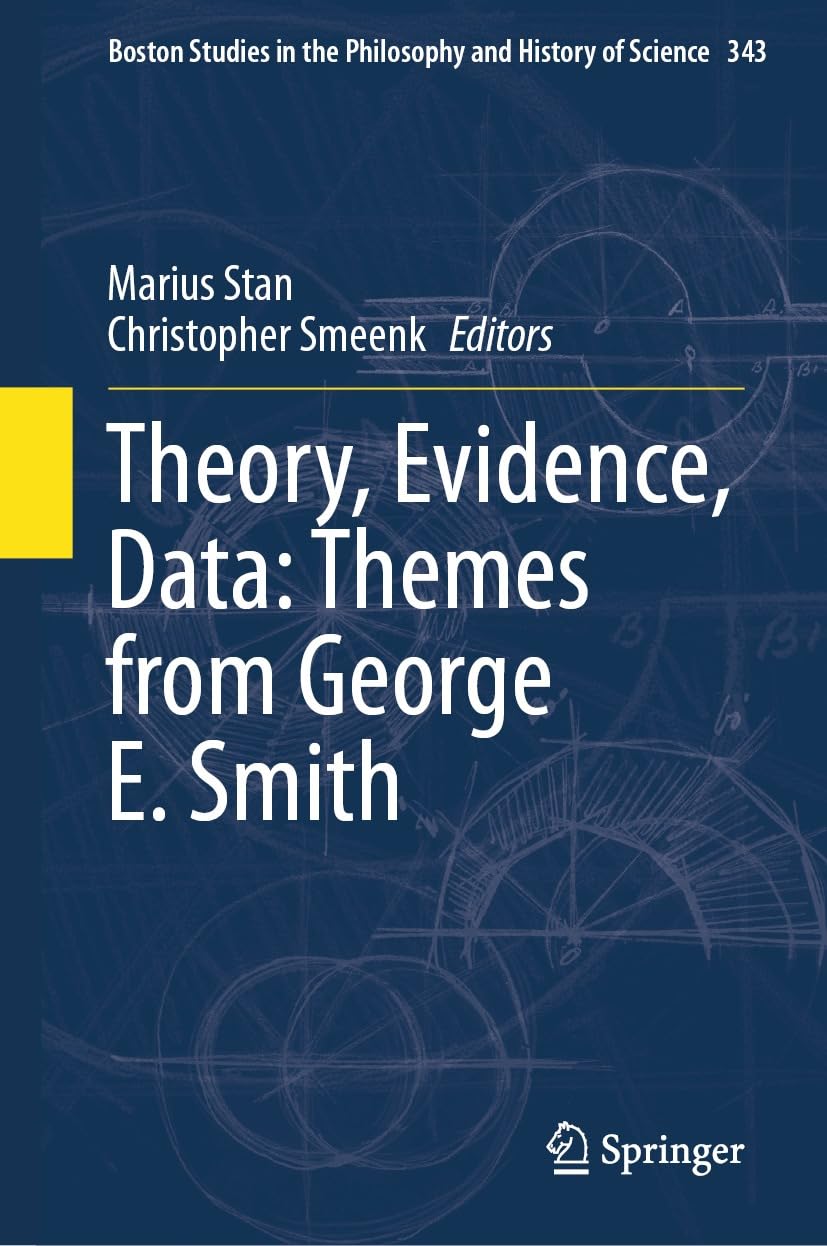
@book{Stan2023, editor = {Stan, Marius and Smeenk, Chris}, publisher = {Springer}, booktitle = {Theory, Evidence, Data: Themes From George E. Smith}, date = {2023}, address = {Cham}, amazon = {https://www.amazon.com/Theory-Evidence-Data-Studies-Philosophy-ebook/dp/B0CCT5NHB1/ref=sr_1_1?crid=2M0JZIE5SKO7Y&keywords=theory%2C+evidence%2C+data+smeenk+stan&qid=1698177886&sprefix=theory%2C+evidence%2C+data+smeenk+stan%2Caps%2C94&sr=8-1}, series = {Boston Studies in Philosophy and History of Science}, volume = {343} }Stan, Marius, and Chris Smeenk, eds. 2023. Theory, Evidence, Data: Themes From George E. Smith. Vol. 343. Boston Studies in Philosophy and History of Science. Cham: Springer.
This book builds on the path-breaking work of George E. Smith and further explores the notions of evidence and confirmation in the exact sciences from two perspectives: conceptual and historical. Contributions in this volume investigate the philosophical presuppositions, explanatory scope, and historical precursors of evidence in mathematical physics and related disciplines. The papers are written by and of interest to philosophers and historians of science.
Articles
- Dark Energy or Modified Gravity?
(with Weatherall, James Owen)
Philosophy of Science (2023)
@article{smeenk2023dark, title = {Dark Energy or Modified Gravity?}, doi = {10.1017/psa.2023.143}, journal = {Philosophy of Science}, publisher = {Cambridge University Press}, author = {Smeenk, Chris and Weatherall, James Owen}, date = {2023}, pages = {1–10} }Smeenk, Chris, and James Owen Weatherall. 2023. “Dark Energy or Modified Gravity?” Philosophy of Science, 1–10. https://doi.org/10.1017/psa.2023.143.
We consider some of the epistemic benefits of exploring “theory space” in the context of modifications of general relativity with intended applications in cosmology. We show how studying modifications of general relativity can help in assessing the robustness of empirical inferences, particularly in inaccessible regimes. We also discuss challenges to sharply distinguishing apparently distinct directions in theory space. - GR as a classical spin-2 theory?
(with Linnemann, Niels and Baker, Mark Robert)
Philosophy of Science (2023)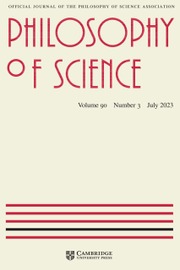
@article{linnemann2023GR, title = {GR as a classical spin-2 theory?}, doi = {10.1017/psa.2023.56}, journal = {Philosophy of Science}, publisher = {Cambridge University Press}, author = {Linnemann, Niels and Smeenk, Chris and Baker, Mark Robert}, date = {2023}, pages = {1–19} }Linnemann, Niels, Chris Smeenk, and Mark Robert Baker. 2023. “GR as a Classical Spin-2 Theory?” Philosophy of Science, 1–19. https://doi.org/10.1017/psa.2023.56.
The self-interaction spin-2 approach to GR has been extremely influential in the particle physics community. Leaving no doubt regarding its heuristic value, we argue that any view of the metric field of GR as nothing but a stand-in for a self-coupling field in at spacetime runs into a dilemma: either the view is physically incomplete in so far as it requires recourse to GR after all, or it leads to an absurd multiplication of alternative viewpoints on GR rendering any understanding of the metric field as nothing but a spin-2 field in at spacetime unjustified. - Philosophical Issues in Early Universe Cosmology
(with Koberinski, Adam)
In Oxford Research Encyclopedia of Physics, (2023)
@incollection{KoberinskiSmeenk2023, author = {Koberinski, Adam and Smeenk, Chris}, title = {Philosophical Issues in Early Universe Cosmology}, url = {http://philsci-archive.pitt.edu/22697/}, booktitle = {Oxford Research Encyclopedia of Physics}, date = {2023} }Koberinski, Adam, and Chris Smeenk. 2023. “Philosophical Issues in Early Universe Cosmology.” In Oxford Research Encyclopedia of Physics. http://philsci-archive.pitt.edu/22697/.
This article highlights some interesting foundational and philosophical issues made salient in early universe cosmology. One major focus is on issues that arise at the boundaries of distinct theories or frameworks, when trying to merge them for describing the early universe. These include issues at the boundary of gravity and statistical physics, as well as gravity and quantum field theory. These foundational issues arise in trying to unify distinct domains of physics. Another major theme of early universe cosmology is the methodological goal of finding dynamical explanations for striking features in the universe. This review surveys many examples of such a methodology—including the cosmic arrow of time, posits of a Past Hypothesis for the initial state of the universe, inflation, baryogenesis, and emergence of spacetime. There is much philosophical debate about the prospects for success of such a methodology; these are surveyed below. - What’s in a Survey? Simulation-Induced Selection Effects in Astronomy
(with Gallagher, Sarah C.)
In Philosophy of Astrophysics: Stars, Simulations, and the Struggle to Determine What is Out There, Springer (2023)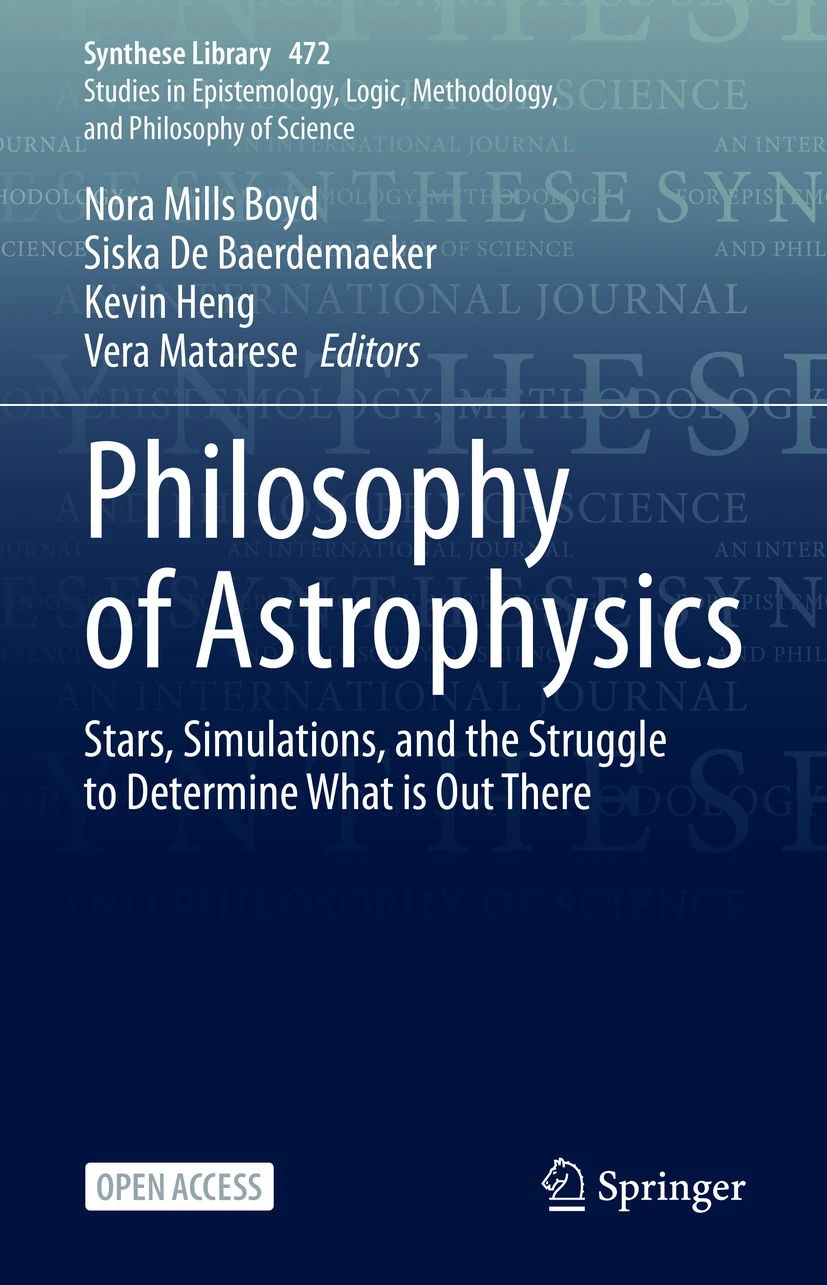
@incollection{Gallagher2023Survey, author = {Gallagher, Sarah C. and Smeenk, Chris}, editor = {Mills Boyd, Nora and De Baerdemaeker, Siska and Heng, Kevin and Matarese, Vera}, title = {What's in a Survey? Simulation-Induced Selection Effects in Astronomy}, booktitle = {Philosophy of Astrophysics: Stars, Simulations, and the Struggle to Determine What is Out There}, date = {2023}, publisher = {Springer}, address = {Cham}, pages = {207--222}, isbn = {978-3-031-26618-8}, doi = {10.1007/978-3-031-26618-8_12} }Gallagher, Sarah C., and Chris Smeenk. 2023. “What’s in a Survey? Simulation-Induced Selection Effects in Astronomy.” In Philosophy of Astrophysics: Stars, Simulations, and the Struggle to Determine What Is Out There, edited by Nora Mills Boyd, Siska De Baerdemaeker, Kevin Heng, and Vera Matarese, 207–22. Cham: Springer. https://doi.org/10.1007/978-3-031-26618-8_12.
Observational astronomy is plagued with selection effects that must be taken into account when interpreting data from astronomical surveys. Because of the physical limitations of observing time and instrument sensitivity, datasets are rarely complete. However, determining specifically what is missing from any sample is not always straightforward. For example, there are always more faint objects (such as galaxies) than bright ones in any brightness-limited sample, but faint objects may not be of the same kind as bright ones. Assuming they are can lead to mischaracterizing the population of objects near the boundary of what can be detected. Similarly, starting with nearby objects that can be well observed and assuming that objects much farther away (and sampled from a younger universe) are of the same kind can lead us astray. Demographic models of galaxy populations can be used as inputs to observing system simulations to create “mock” catalogues that can be used to characterize and account for multiple, interacting selection effects. The use of simulations for this purpose is common practice in astronomy, and blurs the line between observations and simulations; the observational data cannot be interpreted independent of the simulations. We will describe this methodology and argue that astrophysicists have developed effective ways to establish the reliability of simulation-dependent observational programs. The reliability depends on how well the physical and demographic properties of the simulated population can be constrained through independent observations. We also identify a new challenge raised by the use of simulations, which we call the “problem of uncomputed alternatives.” Sometimes the simulations themselves create unintended selection effects when the limits of what can be simulated lead astronomers to only consider a limited space of alternative proposals. - Trouble with Hubble: Status of the Big Bang Models
Philosophy of Science (2022)
@article{smeenk2022trouble, author = {Smeenk, Chris}, journal = {Philosophy of Science}, volume = {89}, pages = {1265-1274}, doi = {10.1017/psa.2022.40}, publisher = {Cambridge University Press}, title = {Trouble with Hubble: Status of the Big Bang Models}, date = {2022} }Smeenk, Chris. 2022. “Trouble with Hubble: Status of the Big Bang Models.” Philosophy of Science 89: 1265–74. https://doi.org/10.1017/psa.2022.40.
Cosmologists take the ΛCDM model to be a permanent contribution to our knowledge of the universe, based on the success of precision cosmology. Consistent, independent determinations of the parameters in this model encourage physicists to take it seriously. This stance incurs an obligation to resolve any discrepancies by reanalyzing measurements or adding further complexity. Recent observations in cosmology indicate a tension between “local” and “global” determinations of the Hubble constant. Here I argue that this tension illustrates one of the benefits of taking the model seriously and consider the challenges to making a case for the permanence of ΛCDM. - Λ and the limits of effective field theory
(with Koberinski, Adam)
Philosophy of Science (2022)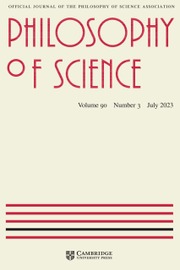
@article{koberinski2022lambda, author = {Koberinski, Adam and Smeenk, Chris}, journal = {Philosophy of Science}, volume = {90}, pages = {454-474}, preprint = {Phil-sci: 20585}, doi = {10.1017/psa.2022.16}, title = {{\Lambda} and the limits of effective field theory}, date = {2022}, selected = {true} }Koberinski, Adam, and Chris Smeenk. 2022. “Λ And the Limits of Effective Field Theory.” Philosophy of Science 90: 454–74. https://doi.org/10.1017/psa.2022.16.
The cosmological constant problem stems from treating quantum field theory and general relativity as an effective field theory (EFT). We argue that the problem is a reduction ad absurdum and that one should reject the assumption that general relativity can generically be treated as an EFT. This marks a failure of naturalness and provides an internal signal that EFT methods do not apply in all spacetime domains. We then take an external view, showing that the assumptions for using EFTs are violated in general relativistic domains where Λ is relevant. We highlight some ways forward that do not depend on naturalness. - Noether’s first theorem and the energy-momentum tensor ambiguity problem
(with Baker, Mark Robert and Linnemann, Niels)
In The Philosophy and Physics of Noether’s Theorems, Cambridge University Press (2022)
@incollection{baker2021noether, author = {Baker, Mark Robert and Smeenk, Chris and Linnemann, Niels}, booktitle = {The Philosophy and Physics of Noether's Theorems}, publisher = {Cambridge University Press}, address = {Cambridge}, editor = {Read, James and Teh, Nicholas}, preprint = {arXiv preprint arXiv:2107.10329}, pages = {169-196}, doi = {10.1017/9781108665445.009}, title = {Noether's first theorem and the energy-momentum tensor ambiguity problem}, date = {2022} }Baker, Mark Robert, Chris Smeenk, and Niels Linnemann. 2022. “Noether’s First Theorem and the Energy-Momentum Tensor Ambiguity Problem.” In The Philosophy and Physics of Noether’s Theorems, edited by James Read and Nicholas Teh, 169–96. Cambridge: Cambridge University Press. https://doi.org/10.1017/9781108665445.009.
Using the converse of Noether’s first theorem, this chapter shows that the Bessel-Hagen-type transformations are uniquely selected in the case of electrodynamics, which powerfully dissolves the methodological ambiguity at hand. It then considers how this line of argument applies to a variety of other cases, including in particular the challenge of defining an energy-momentum tensor for the gravitational field in linearised gravity. Finally, the search for proper Noether energy-momentum tensors is put into context with recent claims that Noether’s theorem and its converse make statements on equivalence classes of symmetries and conservation laws. The aim is to identify clearly the limitations of this latter move, and to develop this position by contrast with recent philosophical discussions about how symmetries relate to the representational capacities of theories. - Contemporary Philosophical Perspectives on the Cosmological Constant
(with Koberinski, Adam and Falck, Bridget)
Universe (2022)
@article{koberinski2022contemporary, author = {Koberinski, Adam and Smeenk, Chris and Falck, Bridget}, journal = {Universe}, volume = {9}, pages = {134}, doi = {10.3390/universe9030134}, preprint = {arXiv preprint arXiv:2212.04335}, title = {Contemporary Philosophical Perspectives on the Cosmological Constant}, date = {2022}, selected = {true} }Koberinski, Adam, Chris Smeenk, and Bridget Falck. 2022. “Contemporary Philosophical Perspectives on the Cosmological Constant.” Universe 9: 134. https://doi.org/10.3390/universe9030134.
The (re)introduction of Λ into cosmology has spurred debates that touch on central questions in philosophy of science, as well as the foundations of general relativity and particle physics. We provide a systematic assessment of the often implicit philosophical assumptions guiding the methodology of precision cosmology in relation to dark energy. We start by briefly introducing a recent account of scientific progress in terms of risky and constrained lines of inquiry. This allows us to contrast aspects of Λ that make it relevantly different from other theoretical entities in science, such as its remoteness from direct observation or manipulability. We lay out a classification for possible ways to explain apparent accelerated expansion but conclude that these conceptually clear distinctions may blur heavily in practice. Finally, we consider the important role played in cosmology by critical tests of background assumptions, approximation techniques, and core principles, arguing that the weak anthropic principle fits into this category. We argue that some core typicality assumptions–such as the Copernican principle and the cosmological principle–are necessary though not provable, while others–such as the strong anthropic principle and appeals to naturalness or probability in the multiverse–are not similarly justifiable. - Determinism and general relativity
(with Wüthrich, Christian)
Philosophy of Science (2021)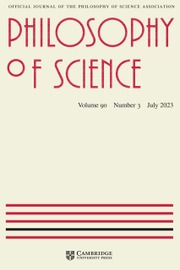
@article{smeenk2020determinism, author = {Smeenk, Chris and W{\"u}thrich, Christian}, journal = {Philosophy of Science}, volume = {88}, pages = {638-664}, doi = {10.1086/713904}, preprint = {arXiv preprint arXiv:2009.07555}, title = {Determinism and general relativity}, date = {2021}, selected = {true} }Smeenk, Chris, and Christian Wüthrich. 2021. “Determinism and General Relativity.” Philosophy of Science 88: 638–64. https://doi.org/10.1086/713904.
We investigate the fate of determinism in general relativity (GR), comparing the philosopher’s account with the physicist’s well-posed initial value formulations. The fate of determinism is interwoven with the question of what it is for a spacetime to be ‘physically reasonable’. A central concern is the status of global hyperbolicity, a putatively necessary condition for determinism in GR. While global hyperbolicity may fail to be true of all physically reasonable models, we analyze whether global hyperbolicity should be (i) imposed by fiat; (ii) established from weaker assumptions, as in cosmic censorship theorems; or (iii) justified by beyond-GR physics. - Some reflections on the structure of cosmological knowledge
Studies in History and Philosophy of Modern Physics (2020)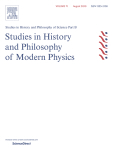
@article{smeenk2020some, author = {Smeenk, Chris}, journal = {Studies in History and Philosophy of Modern Physics}, publisher = {Elsevier}, title = {Some reflections on the structure of cosmological knowledge}, volume = {71}, pages = {220-231}, doi = {10.1016/j.shpsb.2020.05.004}, date = {2020}, selected = {true} }Smeenk, Chris. 2020. “Some Reflections on the Structure of Cosmological Knowledge.” Studies in History and Philosophy of Modern Physics 71: 220–31. https://doi.org/10.1016/j.shpsb.2020.05.004.
Stein has characterized one of the central problems in accounting for our knowledge in physics as that of getting the laboratory, or observatory, inside the theory – that is, of understanding how the mathematical structures of fundamental physical theories have empirical content. He has argued that physicists respond to this problem by giving schematic representations of observers and experiments. In addition, Stein emphasizes the importance of regarding knowledge as an enterprise, with current theories providing guidance for future inquiry. I will explore some ramifications of this way of thinking about the structure of scientific theories for contemporary cosmology. One goal of observational cosmology is to measure the six basic parameters appearing in the standard model of cosmology. These parameters are well-defined if the universe is suitably approximated at some scale by a perturbed FLRW model. The enormous extrapolations involved in the standard model are often justified by the consistent determination of these parameters via a variety of methods. Here I will consider two recent debates regarding this approach to cosmology, inspired by Stein’s work. The first debate regards the impact of different ways of characterizing the propagation of light through a cosmological spacetime on the determination of cosmological parameters (such as H_0). The second regards how the highly symmetric FLRW models relate to describing the real universe, at small scales where it is very lumpy. - Q.E.D., QED
(with Koberinski, Adam)
Studies in the History and Philosophy of Modern Physics (2020)
@article{koberinski2020q, author = {Koberinski, Adam and Smeenk, Chris}, journal = {Studies in the History and Philosophy of Modern Physics}, doi = {10.1016/j.shpsb.2020.03.003}, title = {Q.E.D., QED}, volume = {71}, pages = {1-13}, date = {2020} }Koberinski, Adam, and Chris Smeenk. 2020. “Q.E.D., QED.” Studies in the History and Philosophy of Modern Physics 71: 1–13. https://doi.org/10.1016/j.shpsb.2020.03.003.
- Validating the Universe in a Box
(with Gallagher, Sarah C)
Philosophy of Science (2020)
@article{smeenk2020validating, author = {Smeenk, Chris and Gallagher, Sarah C}, journal = {Philosophy of Science}, volume = {87}, pages = {1221-1233}, preprint = {arXiv preprint arXiv:2001.09101}, doi = {10.1086/710627}, title = {Validating the Universe in a Box}, date = {2020} }Smeenk, Chris, and Sarah C Gallagher. 2020. “Validating the Universe in a Box.” Philosophy of Science 87: 1221–33. https://doi.org/10.1086/710627.
Computer simulations of the formation and evolution of large-scale structure in the universe are integral to the enterprise of modern cosmology. Establishing the reliability of these simulations has been extremely challenging, primarily because of epistemic opacity. In this setting, robustness analysis defined by requiring converging outputs from a diverse ensemble of simulations is insufficient to determine simulation validity. We propose an alternative path of structured code validation that applies eliminative reasoning to isolate and reduce possible sources of error, a potential path that is already being explored by some cosmologists. - Philosophical Aspects of Cosmology
In Oxford Handbook of the History of Modern Cosmology, Oxford University Press (2019)
@incollection{smeenk2019philosophical, title = {Philosophical Aspects of Cosmology}, author = {Smeenk, Chris}, booktitle = {Oxford Handbook of the History of Modern Cosmology}, editor = {Kragh, Helge and Longair, Malcolm S.}, pages = {497-530}, doi = {10.1093/oxfordhb/9780198817666.013.13}, publisher = {Oxford University Press}, address = {Oxford}, date = {2019} }Smeenk, Chris. 2019. “Philosophical Aspects of Cosmology.” In Oxford Handbook of the History of Modern Cosmology, edited by Helge Kragh and Malcolm S. Longair, 497–530. Oxford: Oxford University Press. https://doi.org/10.1093/oxfordhb/9780198817666.013.13.
The development of cosmological theories has been accompanied by philosophical debates inspired by the contrasts between cosmology and other areas of physics. This chapter reviews aspects of these debates from a historical perspective, beginning with debates about whether the uniqueness of the universe implies that cosmology needs a distinctive methodology. Underdetermination of theory by the evidence is particularly challenging due to horizons and inaccessible physics. Theories of the ‘origin’ of the universe do not have the same structure as other physical theories. Recent debates have focused on how to evaluate theories that predict a multiverse, in particular regarding the significance of fine-tuning and how to conduct anthropic reasoning. - Inflation, Dark Matter, and Dark Energy
(with Longair, Malcolm)
In Oxford Handbook of the History of Modern Cosmology, Oxford University Press (2019)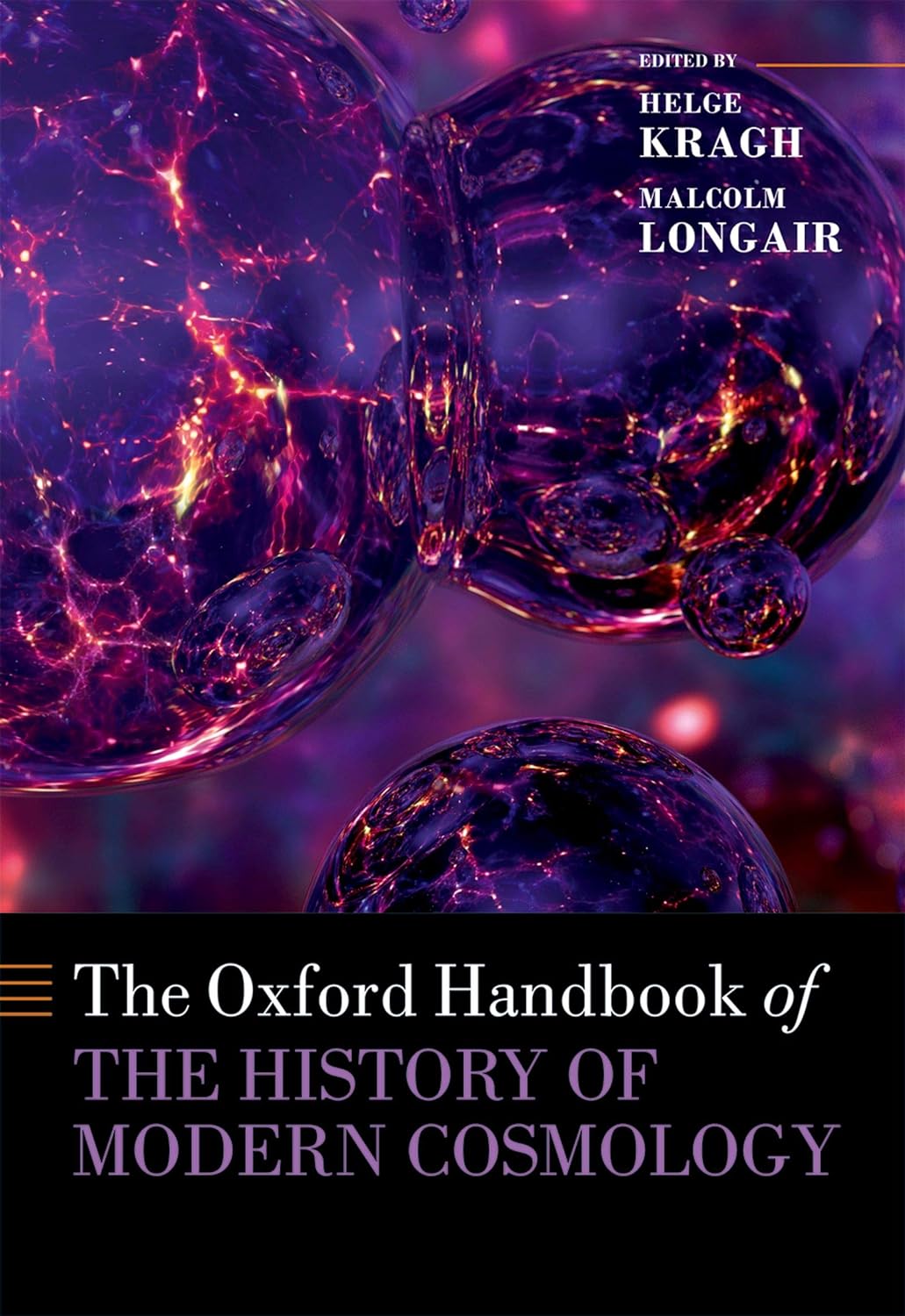
@incollection{longairsmeenk2019, title = {Inflation, Dark Matter, and Dark Energy}, author = {Longair, Malcolm and Smeenk, Chris}, booktitle = {Oxford Handbook of the History of Modern Cosmology}, editor = {Kragh, Helge and Longair, Malcolm S.}, pages = {426-464}, doi = {10.1093/oxfordhb/9780198817666.013.11}, publisher = {Oxford University Press}, address = {Oxford}, date = {2019} }Longair, Malcolm, and Chris Smeenk. 2019. “Inflation, Dark Matter, and Dark Energy.” In Oxford Handbook of the History of Modern Cosmology, edited by Helge Kragh and Malcolm S. Longair, 426–64. Oxford: Oxford University Press. https://doi.org/10.1093/oxfordhb/9780198817666.013.11.
The success of the ΛCDM model has raised a number of challenging problems for the origin of structure in the universe and the initial state from which it evolved. The origins of these basic cosmological problems are described. The dark matter must be non-baryonic, but its nature has not been established. Likewise, the nature of the dark energy is not understood. The inflationary model for the very early universe has had some undoubted successes in accounting for the initial power-spectrum of fluctuations from which large-scale structures formed but there is no physical realization of the inflaton field. Defects formed during phase transitions in the early universe cannot account for the initial power spectrum of fluctuations, but may have some part to play in structure formation. The origin of the baryon-antibaryon asymmetry in the early universe is not understood in terms of theories of particle physics. - Gaining Access to the Early Universe
In Why Trust a Theory?, Cambridge University Press (2019)
@incollection{smeenk2019gaining, author = {Smeenk, Chris}, booktitle = {Why Trust a Theory?}, pages = {315--338}, publisher = {Cambridge University Press}, title = {Gaining Access to the Early Universe}, doi = {10.1017/9781108671224.021}, date = {2019} }Smeenk, Chris. 2019. “Gaining Access to the Early Universe.” In Why Trust a Theory?, 315–38. Cambridge University Press. https://doi.org/10.1017/9781108671224.021.
This paper considers the problem of underderdetermination, and its ramifications for cosmology, from a perspective that departs from the conventional wisdom in philosophy. In many historical cases, the data have sufficed to determine the correct theory within a given domain, in a sense that I will make precise. This argument depends on two main claims. First, the theory that can be determined in this sense consists of law-like relationships postulated to hold among physical properties. The over-determination argument does not similarly support explanatory theories, or general theoretical frameworks. Second, scientists typically “trust” such theories in that they presuppose them to gain access to an entirely new domain of phenomena. The precise lawlike relationships of the theory allow scientists to draw inferences regarding some target phenomena based on relatively accessible data. The initial evidence in favor of accepting the theory may be quite weak. Yet, I will argue, in several historical cases, subsequent research based on the theory leads to powerful evidence in its favor. This evidence can be sufficient to support the claim that the theory is a permanent contribution to science. I will further argue that this evidence is far stronger than predictive success; the use of the theory in developing an account of some domain of phenomena also supports the claim that it has identified (at least approximately) correct counter-factual dependencies. One aim of the paper, extending beyond the conference talk, is to defend this line of thought in more detail, and consider how it contrasts with Dawid’s treatment of underdetermination. The second aim is to explore how this line of thought applies to contemporary cosmology. I will argue that, by contrast with the historical cases of over-determination, some versions of inflationary cosmology do not qualify as an “exact theory,” in that they fail to propose law-like dependencies among physical properties. - The Cosmos As Involving Local Laws and Inconceivable without Them
(with Benétreau-Dupin, Yann)
The Monist (2017)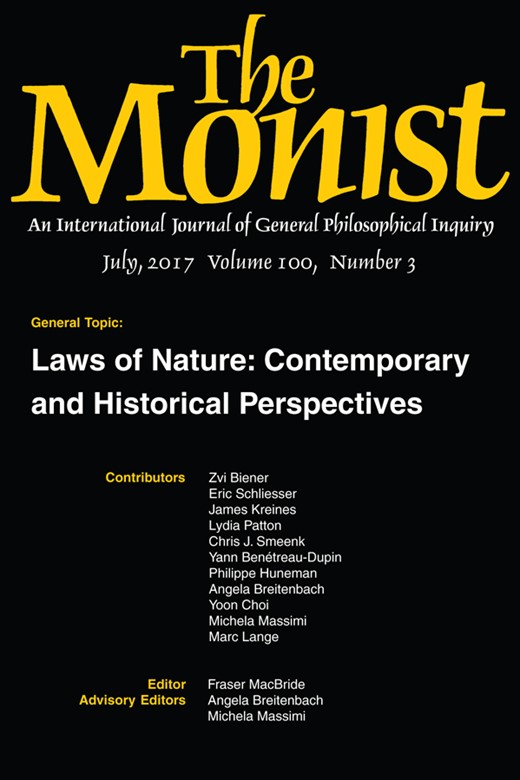
@article{smeenk2017cosmos, author = {Smeenk, Chris and Ben{\'e}treau-Dupin, Yann}, journal = {The Monist}, number = {3}, pages = {357--372}, publisher = {Oxford University Press}, title = {The Cosmos As Involving Local Laws and Inconceivable without Them}, doi = {https://doi.org/10.1093/monist/onx015}, volume = {100}, date = {2017} }Smeenk, Chris, and Yann Benétreau-Dupin. 2017. “The Cosmos As Involving Local Laws and Inconceivable without Them.” The Monist 100 (3): 357–72. https://doi.org/https://doi.org/10.1093/monist/onx015.
Traditional debates, such as those regarding whether the universe is finite in spatial or temporal extent, exemplified, according to Kant, the inherent tendency of pure reason to lead us astray. Although various aspects of Kant’s arguments fail to find a footing in modern cosmology, Kant’s objections to the search for a complete objective description of the cosmos are related to three intertwined issues that are still of central importance: the applicability of universal laws, the status of distinctively cosmological laws, and the explanatory sufficiency of laws. We will advocate a broadly Kantian position on these three issues as part of a critical response to a prevalent strain of Leibnizian rationalism in contemporary cosmology. - Testing inflation
In Philosophy of Cosmology, Cambridge University Press (2017)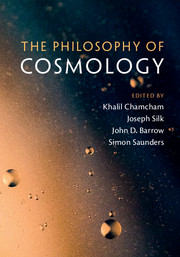
@incollection{smeenk2016testing, author = {Smeenk, Chris}, booktitle = {Philosophy of Cosmology}, editor = {Chamcham, K. and Barrow, J. D. and Silk, J. and Saunders, S.}, publisher = {Cambridge University Press}, address = {Cambridge}, pages = {206-227}, doi = {10.1017/9781316535783.011}, title = {Testing inflation}, date = {2017} }Smeenk, Chris. 2017. “Testing Inflation.” In Philosophy of Cosmology, edited by K. Chamcham, J. D. Barrow, J. Silk, and S. Saunders, 206–27. Cambridge: Cambridge University Press. https://doi.org/10.1017/9781316535783.011.
Over the last thirty years, inflationary cosmology has been the dominant theoretical framework for the study of the very early universe. The central idea of inflation is that the universe passed through an impressive growth spurt, a transient phase of quasi-exponential (“inflationary”) expansion which sets the stage for sub- sequent evolution described by the standard big bang model of cosmology. This inflationary phase leaves an imprint on various observable features of the universe. Observations can then constrain the fundamental physics driving inflation, typically described in terms of an “inflaton” field. Traces of an inflationary stage left in the form of temperature variations and polarization of the cosmic microwave background radiation (CMB) are particularly revealing regarding the inflationary phase. There are currently many models of infla- tion compatible with the available data, including the precise data sets generated by assiduous observations of the CMB. Yet there are ongoing debates regarding how strongly this data supports inflation. Critics of inflation argue, among other things, that its compatibility with the data reflects little more than the enormous flexibility of inflationary model-building. These concerns have become particularly pressing in light of the widespread acceptance of eternal inflation, which seems to imply that all possible observations are realized somewhere in a vast multiverse. - Philosophical Geometers and Geometrical Philosophers
In The Language of Nature: Reassessing the Mathematization of Natural Philosophy in the Seventeenth Century, University of Minnesota Press (2016)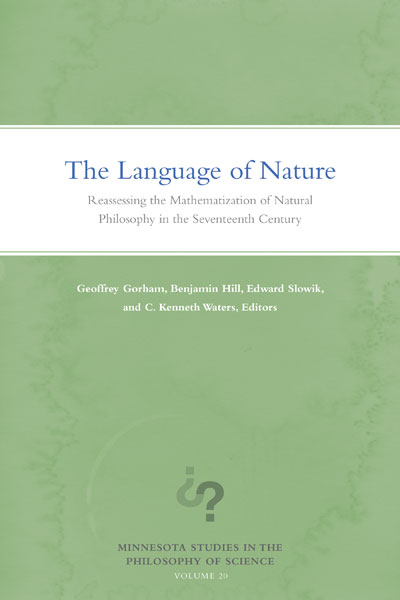
@incollection{smeenk2016philosophical, author = {Smeenk, Chris}, booktitle = {The Language of Nature: Reassessing the Mathematization of Natural Philosophy in the Seventeenth Century}, pages = {308--338}, url = {https://manifold.umn.edu/projects/the-language-of-nature}, publisher = {University of Minnesota Press}, title = {Philosophical Geometers and Geometrical Philosophers}, date = {2016} }———. 2016. “Philosophical Geometers and Geometrical Philosophers.” In The Language of Nature: Reassessing the Mathematization of Natural Philosophy in the Seventeenth Century, 308–38. University of Minnesota Press. https://manifold.umn.edu/projects/the-language-of-nature.
Newton frequently characterized his methodology as distinctive and capable of achieving greater evidential support than that of his contemporaries, due to its mathematical character. Newton’s pronouncements reflect a striking position regarding the role of mathematics in natural philosophy. We can give an initial characterization of his position by considering two questions central to seventeenth century debates about the applicability of mathematics. First, how are we to understand the distinctive universality and necessity of mathematical reasoning? One common way to preserve the demonstrative character of mathematics was to restrict its domain, as far as possible, to pure abstractions. The subject matter of mathematics is then taken to be abstracted from the changeable natural world, consisting of quantity and magnitude themselves rather than the objects bearing quantifiable properties. Yet restricting the domain in this way leaves it difficult to see how mathematics relates to natural phenomena. How could the book of nature be written in a language of pure abstractions? Second, what is the proper role of mathematical reasoning in natural philosophy? Many followed Aristotle in consigning mathematics to a subordinate role. Mathematics could not fulfill the main aim of natural philosophy, namely to provide demonstrations reflecting the essences of things and nature’s causal order. A related concern was also pressing for the mechanical philosophers: a merely mathematical demonstration fails to provide an intelligible mechanical explanation. The very title of Newton’s masterpiece, Philosophiae Naturalis Principia Mathematica, would have been extremely perplexing: how could natural philosophy be based on mathematical principles? My aim is to articulate Newton’s position regarding the mathematization of nature in response to these two concerns. - Philosophy of the Physical Sciences
(with Hoefer, Carl)
In The Oxford Handbook of Philosophy of Science, Oxford University Press (2016)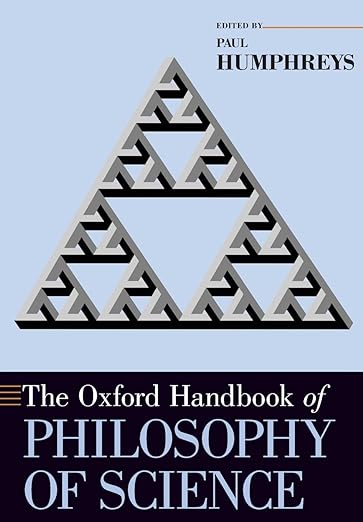
@incollection{hoefer2016philosophy, author = {Hoefer, Carl and Smeenk, Chris}, booktitle = {The Oxford Handbook of Philosophy of Science}, pages = {115-136}, doi = {10.1093/oxfordhb/9780199368815.013.4}, publisher = {Oxford University Press}, title = {Philosophy of the Physical Sciences}, date = {2016} }Hoefer, Carl, and Chris Smeenk. 2016. “Philosophy of the Physical Sciences.” In The Oxford Handbook of Philosophy of Science, 115–36. Oxford University Press. https://doi.org/10.1093/oxfordhb/9780199368815.013.4.
The authors survey some debates about the nature and structure of physical theories and about the connections between our physical theories and naturalized metaphysics. The discussion is organized around an “ideal view” of physical theories and criticisms that can be raised against it. This view includes controversial commitments regarding the best analysis of physical modalities and intertheory relations. The authors consider the case in favor of taking laws as the primary modal notion, discussing objections related to alleged violations of the laws, the apparent need to appeal to causality, and the status of probability. The “ideal view” includes a commitment that fundamental physical theories are explanatorily sufficient. The authors discuss several challenges to recovering the manifest image from fundamental physics, along with a distinct challenge to reductionism based on acknowledging the contributions of less fundamental theories in physical explanations. - Predictability crisis in early universe cosmology
Studies in History and Philosophy of Modern Physics (2014)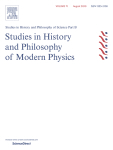
@article{smeenk2014predictability, author = {Smeenk, Chris}, journal = {Studies in History and Philosophy of Modern Physics}, pages = {122--133}, publisher = {Pergamon}, title = {Predictability crisis in early universe cosmology}, doi = {10.1016/j.shpsb.2013.11.003}, volume = {46}, date = {2014} }Smeenk, Chris. 2014. “Predictability Crisis in Early Universe Cosmology.” Studies in History and Philosophy of Modern Physics 46: 122–33. https://doi.org/10.1016/j.shpsb.2013.11.003.
Inflationary cosmology has been widely accepted due to its successful predictions: for a “generic” initial state, inflation produces a homogeneous, flat, bubble with an appropriate spectrum of density perturbations. However, the discovery that inflation is “generically eternal,” leading to a vast multiverse of inflationary bubbles with different low-energy physics, threatens to undermine this account. There is a “predictability crisis” in eternal inflation, because extracting predictions apparently requires a well- defined measure over the multiverse. This has led to discussions of anthropic predictions based on a measure over the multiverse, and an assumption that we are typical observers. I will give a pessimistic assessment of attempts to make predictions in this sense, emphasizing in particular problems that arise even if a unique measure can be found. - Einstein’s role in the creation of relativistic cosmology
In Cambridge Companion to Einstein, Cambridge University Press (2014)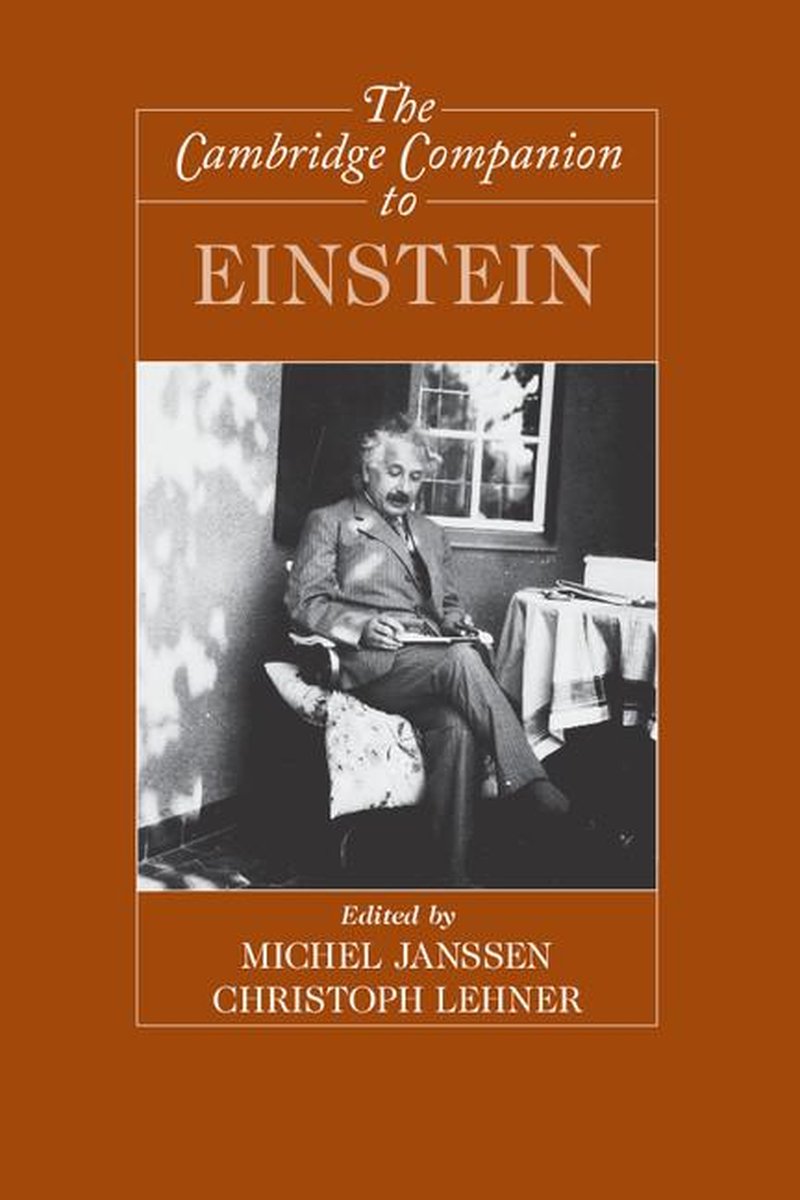
@incollection{smeenk2012einstein, author = {Smeenk, Chris}, booktitle = {Cambridge Companion to Einstein}, editor = {Janssen, Michel and Lehner, Christoph}, publisher = {Cambridge University Press}, address = {Cambridge}, doi = {10.1017/CCO9781139024525.009}, title = {Einstein's role in the creation of relativistic cosmology}, pages = {228-269}, date = {2014} }———. 2014. “Einstein’s Role in the Creation of Relativistic Cosmology.” In Cambridge Companion to Einstein, edited by Michel Janssen and Christoph Lehner, 228–69. Cambridge: Cambridge University Press. https://doi.org/10.1017/CCO9781139024525.009.
This paper describes the early days of relativistic cosmology, focusing on Einstein’s contributions to the field. It starts with an overview of the “Great Debate” in observational astronomy during the 10s and 20s, before turning to Einstein’s “rough and winding road” to the first cosmological model, with an emphasis on the difficulties with Newtonian cosmology and the importance of Mach’s principle. Conversations and correspondence with De Sitter forced Einstein to consider the status of Mach’s principle in his new theory, leading to the introduction of his cosmological model. Although Einstein hoped that this would insure the validity of Mach’s principle, De Sitter produced an apparent counterexample, a new model in which Mach’s principle did not hold. Einstein’s attempts to rule out this counterexample drew him into a tangle of subtle problems regarding the nature of singularities that also ensnared his correspondents Hermann Weyl and Felix Klein. Throughout the 20s, theoretical cosmology focused for the most part on understanding the features of the models due to Einstein and De Sitter and attempting to find some grounds on which to prefer one solution to the other. These debates came to an end with the discovery that several other viable solutions had been overlooked. This oversight can be blamed on Einstein’s influential assumption that the universe does not vary with time, which was elevated from a simplifying assumption to a constraint on any physically reasonable cosmological model. This assumption kept Einstein, and many of the other leading lights of theoretical cosmology, from discovering expanding universe models. The concluding section briefly considers the fate of the consensus formed in the early days of relativistic cosmology in the ensuing decades, focusing on debates regarding the status of the so-called “cosmological principle.” - Time in Cosmology
A Companion to the Philosophy of Time (2013)
@article{smeenk2013time, author = {Smeenk, Chris}, journal = {A Companion to the Philosophy of Time}, pages = {201--219}, publisher = {John Wiley \& Sons, Ltd}, title = {Time in Cosmology}, doi = {10.1002/9781118522097.ch13}, date = {2013} }———. 2013. “Time in Cosmology.” A Companion to the Philosophy of Time, 201–19. https://doi.org/10.1002/9781118522097.ch13.
This chapter provides a self-contained introduction to time in relativistic cosmology that clarifies how questions about the nature of time should be posed and the extent to which they have been or can be answered empirically. The first section of the chapter recounts the loss of Newtonian absolute time with the advent of special and general relativity, and the partial recovery of absolute time in the form of cosmic time in cosmological models. The second considers the beginning and end of time in a broader class of models in which there is not an analog of Newtonian absolute time. Reasonable physical assumptions imply that the universe is finite to the past, and the third section considers the “beginning” itself. The fourth section discusses the ramifications of the two recent debates of cosmology. The final section takes up the source of the asymmetry in people’s experience of time. - Newton’s Principia
(with Schliesser, Eric)
In The Oxford handbook of the History of Physics, Oxford University Press (2013)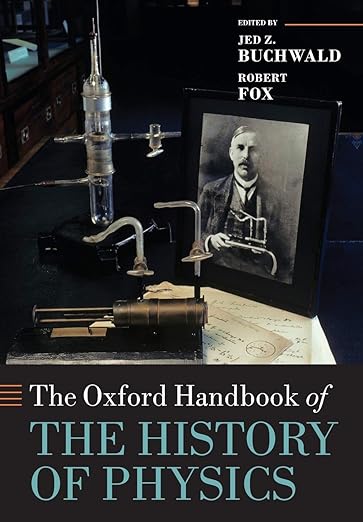
@incollection{smeenk2013newton, author = {Smeenk, Chris and Schliesser, Eric}, booktitle = {The Oxford handbook of the History of Physics}, pages = {109--165}, address = {Oxford}, editor = {Fox, Robert and Buchwald, Jed}, publisher = {Oxford University Press}, title = {Newton's {Principia}}, doi = {10.1093/oxfordhb/9780199696253.013.6}, date = {2013} }Smeenk, Chris, and Eric Schliesser. 2013. “Newton’s Principia.” In The Oxford Handbook of the History of Physics, edited by Robert Fox and Jed Buchwald, 109–65. Oxford: Oxford University Press. https://doi.org/10.1093/oxfordhb/9780199696253.013.6.
This article examines the historical context of Isaac Newton’s Mathematical Principles of Natural Philosophy (Principia) and how it reoriented natural philosophy for generations. It first considers how the Principia extends and refines the ideas of De Motu, taking into account the three Laws of Motion, the force responsible for the planetary trajectories, the motion of projectiles in a resisting medium, and the law of universal gravitation. It then discusses three changes that influenced fundamentally the content and reception of the Principia: the relabelling and rewording of nine ‘hypotheses’ (into ‘phenomena’ and ‘rules of reasoning’) at the start of Book 3; the addition of the General Scholium; and changes that minimized explicit commitments to atomism. It also assesses the impact of the Principia on the development of physics and concludes with an overview of Newton’s theory about the cause of gravity - Philosophy of Cosmology
In The Oxford Handbook of the Philosophy of Physics, Oxford University Press USA (2012)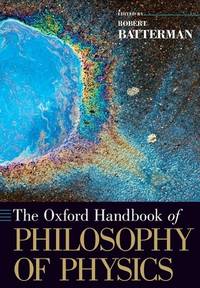
@incollection{smeenk2012philosophy, author = {Smeenk, Chris}, booktitle = {The Oxford Handbook of the Philosophy of Physics}, publisher = {Oxford University Press USA}, address = {New York}, title = {Philosophy of Cosmology}, editor = {Batterman, Robert}, pages = {607-652}, doi = {10.1093/oxfordhb/9780195392043.013.0018}, date = {2012} }Smeenk, Chris. 2012. “Philosophy of Cosmology.” In The Oxford Handbook of the Philosophy of Physics, edited by Robert Batterman, 607–52. New York: Oxford University Press USA. https://doi.org/10.1093/oxfordhb/9780195392043.013.0018.
This chapter addresses philosophical questions raised in contemporary work on cosmology. It provides an overview of the Standard Model for cosmology and argues that its deficiency in addressing theories regarding the very early universe can be resolved by introducing a dynamical phase of evolution that eliminates the need for a special initial state. The chapter also discusses recent hypotheses about dark matter and energy, issues that it relates to philosophical debates about underdetermination. - Inflation and the Origins of Structure
In Beyond Einstein: Perspectives on Geometry, Gravitation, and Cosmology in the Twentieth Century, Springer (2012)
@incollection{smeenk2012inflation, author = {Smeenk, Chris}, booktitle = {Beyond Einstein: Perspectives on Geometry, Gravitation, and Cosmology in the Twentieth Century}, editor = {Rowe, D. and Sauer, T. and Walter, S.}, pages = {205-241}, publisher = {Springer}, address = {Boston}, series = {Einstein Studies}, volume = {14}, doi = {10.1007/978-1-4939-7708-6_9}, title = {Inflation and the Origins of Structure}, date = {2012} }———. 2012. “Inflation and the Origins of Structure.” In Beyond Einstein: Perspectives on Geometry, Gravitation, and Cosmology in the Twentieth Century, edited by D. Rowe, T. Sauer, and S. Walter, 14:205–41. Einstein Studies. Boston: Springer. https://doi.org/10.1007/978-1-4939-7708-6_9.
- Cotes’s Queries: Newton’s Empiricism and Conceptions of Matter
(with Biener, Zvi)
In Interpreting Newton: Critical Essays, (2012)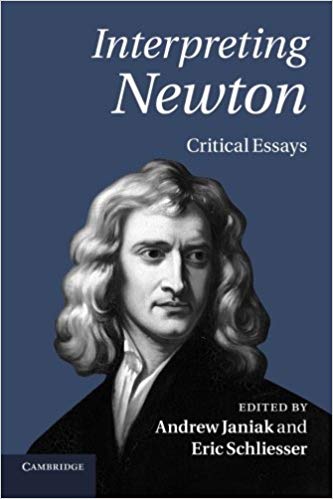
@incollection{Biener2012, author = {Biener, Zvi and Smeenk, Chris}, booktitle = {Interpreting Newton: Critical Essays}, category = {Secondary}, crossref = {JaniakSchliesser2012a}, date = {2012}, pages = {103--137}, title = {Cotes's Queries: Newton's Empiricism and Conceptions of Matter} }Biener, Zvi, and Chris Smeenk. 2012. “Cotes’s Queries: Newton’s Empiricism and Conceptions of Matter.” In Interpreting Newton: Critical Essays, 103–37.
We investigate the relation of Newton’s natural philosophy to his method of inquiry, as it concerns Newton’s ideas about the nature and measure of matter. We argue that a conflict between two conceptions of “quantity of matter” employed in a corollary to proposition III.6 illustrates a deeper conflict between Newton’s view of the nature of extended bodies and the concept of mass appropriate for the Principia. It illustrates Newton’s deep struggles with the concepts appropriate for his physics and their empirical justification. - Time travel and time machines
(with Wüthrich, Christian)
In Oxford Handbook on Time, Oxford University Press (2011)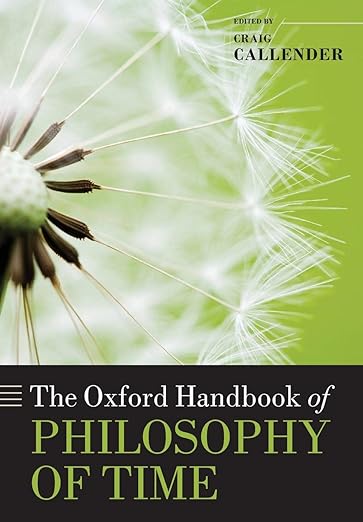
@incollection{smeenk2009time, author = {Smeenk, Chris and W{\"u}thrich, Christian}, booktitle = {Oxford Handbook on Time}, editor = {Callender, Craig}, pages = {577-630}, title = {Time travel and time machines}, publisher = {Oxford University Press}, address = {Oxford}, doi = {10.1093/oxfordhb/9780199298204.003.0021}, date = {2011} }Smeenk, Chris, and Christian Wüthrich. 2011. “Time Travel and Time Machines.” In Oxford Handbook on Time, edited by Craig Callender, 577–630. Oxford: Oxford University Press. https://doi.org/10.1093/oxfordhb/9780199298204.003.0021.
This chapter examines the logical, metaphysical, and physical possibility of time travel understood in the sense of the existence of closed worldlines that can be traced out by physical objects, arguing that none of the purported paradoxes rule out time travel on the grounds of either logic or metaphysics. More relevantly, modern space–time theories such as general relativity seem to permit models that feature closed worldlines. The chapter discusses what this apparent physical possibility of time travel means, and, furthermore, reviews the recent literature on so-called time machines, of devices that produce closed worldlines where none would have existed otherwise. Finally, it investigates what the implications of the quantum behavior of matter might be for the possibility of time travel, and explicates in what sense time travel might be possible according to leading contenders for full quantum theories of gravity such as string theory and loop quantum gravity.. - Do the laws of physics forbid the operation of time machines?
(with Earman, John and Wüthrich, Christian)
Synthese (2009)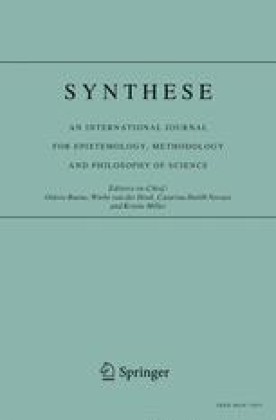
@article{earman2009laws, author = {Earman, John and Smeenk, Chris and W{\"u}thrich, Christian}, journal = {Synthese}, number = {1}, pages = {91--124}, publisher = {Springer}, doi = {10.1007/s11229-008-9338-2}, title = {Do the laws of physics forbid the operation of time machines?}, volume = {169}, date = {2009} }Earman, John, Chris Smeenk, and Christian Wüthrich. 2009. “Do the Laws of Physics Forbid the Operation of Time Machines?” Synthese 169 (1): 91–124. https://doi.org/10.1007/s11229-008-9338-2.
We address the question of whether it is possible to operate a time machine by manipulating matter and energy so as to manufacture closed timelike curves. This question has received a great deal of attention in the physics literature, with attempts to prove no-go theorems based on classical general relativity and various hybrid theories serving as steps along the way towards quantum gravity. Despite the effort put into these no-go theorems, there is no widely accepted definition of a time machine. We explain the conundrum that must be faced in providing a satisfactory definition and propose a resolution. Roughly, we require that all extensions of the time machine region contain closed timelike curves; the actions of the time machine operator are then sufficiently “potent” to guarantee that closed timelike curves appear. We then review no-go theorems based on classical general relativity, semi-classical quantum gravity, quantum field theory on curved spacetime, and Euclidean quantum gravity. Our verdict on the question of our title is that no result of sufficient generality to underwrite a confident “yes” has been proven. Our review of the no-go results does, however, highlight several foundational problems at the intersection of general relativity and quantum physics that lend substance to the search for an answer. - Mie’s Theories of Matter and Gravitation
(with Martin, Chris)
In The Genesis of General Relativity, Springer Netherlands (2007)
@incollection{smeenk2007mie, author = {Smeenk, Chris and Martin, Chris}, booktitle = {The Genesis of General Relativity}, pages = {1543--1553}, publisher = {Springer Netherlands}, title = {Mie's Theories of Matter and Gravitation}, date = {2007} }Smeenk, Chris, and Chris Martin. 2007. “Mie’s Theories of Matter and Gravitation.” In The Genesis of General Relativity, 1543–53. Springer Netherlands.
- The elusive Higgs mechanism
Philosophy of Science (2006)
@article{smeenk2006elusive, author = {Smeenk, Chris}, journal = {Philosophy of Science}, number = {5}, pages = {487--499}, publisher = {JSTOR}, title = {The elusive Higgs mechanism}, volume = {73}, doi = {10.1086/518324}, date = {2006} }Smeenk, Chris. 2006. “The Elusive Higgs Mechanism.” Philosophy of Science 73 (5): 487–99. https://doi.org/10.1086/518324.
The Higgs mechanism is an essential but elusive component of the Standard Model of particle physics. Without it Yang-Mills gauge theories would have been little more than a warm-up exercise in the attempt to quantize gravity rather than serving as the basis for the Standard Model. This article focuses on two problems related to the Higgs mechanism clearly posed in Earman’s recent papers (Earman 2003, 2004a, 2004b): what is the gauge-invariant content of the Higgs mechanism, and what does it mean to break a local gauge symmetry? - False vacuum: Early universe cosmology and the development of inflation
In The universe of general relativity, Springer (2005)
@incollection{smeenk2005false, author = {Smeenk, Chris}, booktitle = {The universe of general relativity}, editor = {Eisenstaedt, J. and Kox, A. J.}, pages = {223--257}, publisher = {Springer}, address = {Boston}, doi = {10.1007/0-8176-4454-7_13}, title = {False vacuum: Early universe cosmology and the development of inflation}, date = {2005} }———. 2005. “False Vacuum: Early Universe Cosmology and the Development of Inflation.” In The Universe of General Relativity, edited by J. Eisenstaedt and A. J. Kox, 223–57. Boston: Springer. https://doi.org/10.1007/0-8176-4454-7_13.
- Pendulums, Pedagogy, and Matter: Lessons from the editing of Newton’s Principia
(with Biener, Zvi)
Science & Education (2004)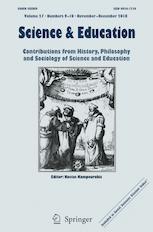
@article{BienSmeen04, author = {Biener, Zvi and Smeenk, Chris}, category = {Secondary}, comment = {Reprinted in Matthews, M.R., Gauld, C.F. \& Stinner, A. (eds.) (2005). \emph{The Pendulum: Scientific, Historical, Philosophical and Educational Perspectives}, Springer, Dordrecht.}, date = {2004}, journal = {Science {\&} Education}, pages = {309--320}, title = {Pendulums, Pedagogy, and Matter: Lessons from the editing of Newton's Principia}, volume = {13}, bdsk-url-1 = {https://doi.org/10.1023/B:SCED.0000041825.12956.35} }Biener, Zvi, and Chris Smeenk. 2004. “Pendulums, Pedagogy, and Matter: Lessons from the Editing of Newton’s Principia.” Science & Education 13: 309–20.
Teaching Newtonian physics involves the replacementof students’ ideas about physical situations with precise conceptsappropriate for mathematical applications. This paper focuses on theconcepts of ‘matter’ and ‘mass’. We suggest that students, likesome pre-Newtonian scientists we examine, use these terms in a waythat conflicts with their Newtonian meaning. Specifically, ‘matter’and ‘mass’ indicate to them the sorts of things that are tangible,bulky, and take up space. In Newtonian mechanics, however, the termsare defined by Newton’s Second Law: ‘mass’ is simply a measure ofthe acceleration generated by an impressed force. We examine therelationship between these conceptions as it was discussed by Newtonand his editor, Roger Cotes, when analyzing a series of pendulumexperiments. We suggest that these experiments, as well as moresophisticated computer simulations, can be used in the classroom tosufficiently differentiate the colloquial and precise meaning of theseterms.
Works in Progress
Thesis
Reviews and other Contributions
- Time Travel and Modern Physics (SEP)
(with Maudlin, Tim and Arntzenius, Frank)
The Stanford Encyclopedia of Philosophy (2023) - Philosophy of Cosmology (SEP)
(with Ellis, George)
The Stanford Encyclopedia of Philosophy (2017) - Essay Review of Friedman, Kant’s Construction of Nature
Philosophy of Science (2015) - Review of Buchwald and Feingold, Newton and the Origin of Civilization
HOPOS (2014) - Cosmology
- Review of Gordon Belot, Geometric Possibility
Philosophia Mathematica (2013) - Introduction: philosophy of quantum field theory
(with Myrvold, WC)
Studies in History and Philosophy of Modern Physics (2011) - Gauge Pressure: Review Symposium on Healey, Gauging What’s Real
(with Rickles, Dean and Lyre, Holger and Healey, Richard)
Metascience (2009) - Sciama, Dennis (1926-1999)
- Tools without Theories: Essay Review of David Kaiser, Drawing Theories Apart
Metascience (2006) - Review of Malament (ed.), Reading Natural Philosophy
Studies in the History and Philosophy of Modern Physics (2005) - Review of Hawking (ed.), The future of spacetime
Studies in History and Philosophy of Modern Physics (2003) - Review of I. B. Cohen and George Smith (eds.) The Cambridge Companion to Newton
(with Biener, Zvi)
In Notre Dame Philosophical Reviews, (2003)